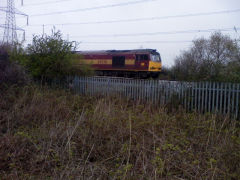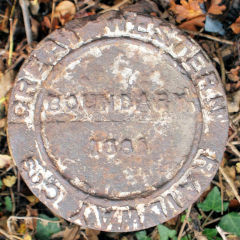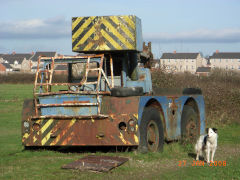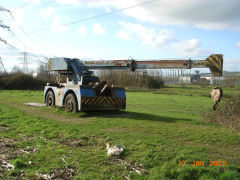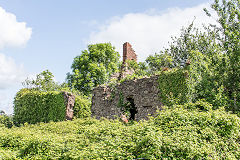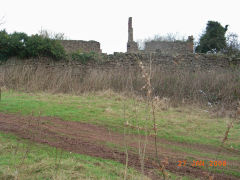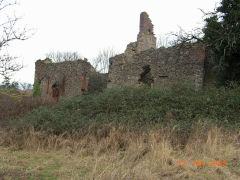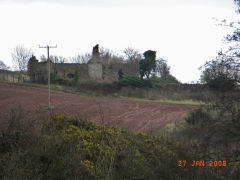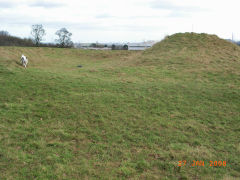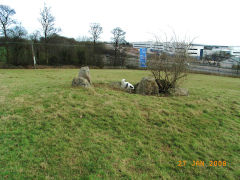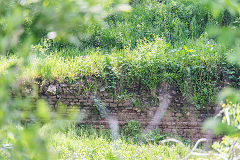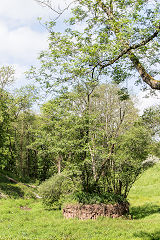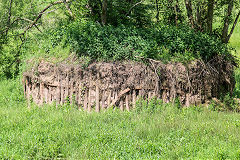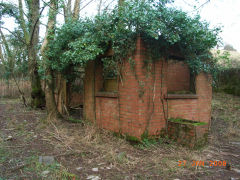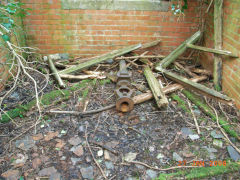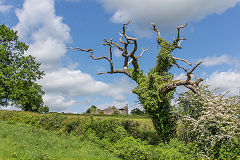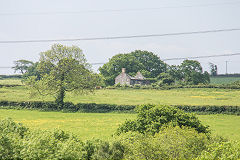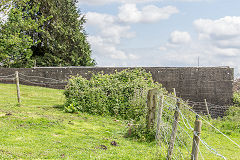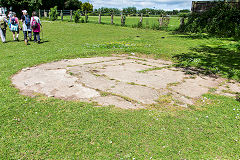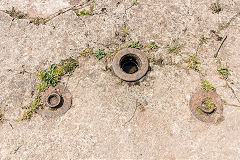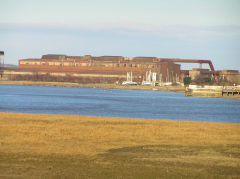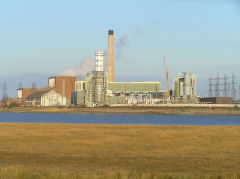Rogerstone, Rhiwderin and Bassaleg
Tredegar Park and Bassaleg
Tredegar Park Forge - ST 2811 8640
Tredegar Park Tramroad - ST 2843 8662
The Tredegar Park Forge and its' tramroad are a little-known feature next to the very famous 'Golden Mile'. The forge was established in 1690 and owned by the Harfords of Melingriffith in 1791 until closure in 1822. A leat following the route of the current dock feeder fed a waterwheel powering beehive furnaces. The tramroad ran along the causeway over the river on a wooden bridge and up to the Sirhowy Tramroad or possibly on to the canal. The current 1870 stone and iron bridge replaced the original but used the same wooden pile foundations.
More information is in this
article by OHIHS member, Robin Williams

Tredegar Park Tramroad
|
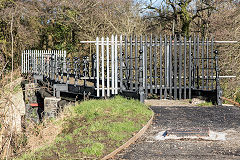
The river bridge
|
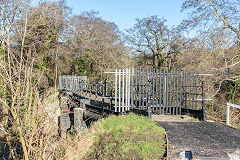
The river bridge
|

The river bridge
|
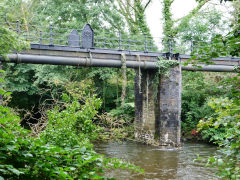
The river bridge
|
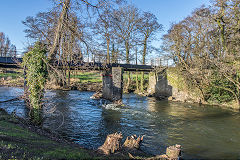
The river bridge
|
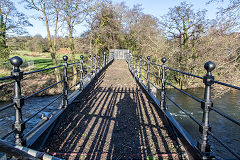
The river bridge trackbed
|
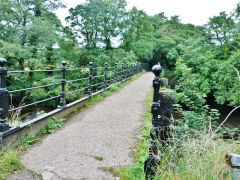
The river bridge trackbed
|
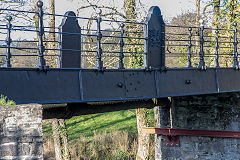
The river bridge plaques
|
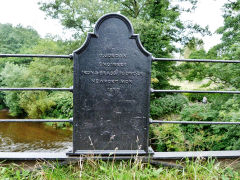
The river bridge plaques
|
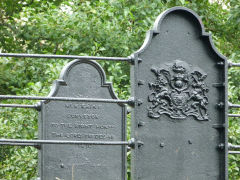
The river bridge plaques
|
|

The tramroad towards the Forge
|

The tramroad towards the Forge
|
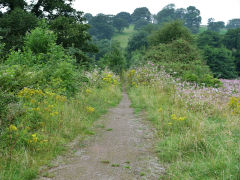
The tramroad towards the Forge
|
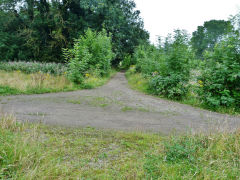
The Forge end of the tramroad
|
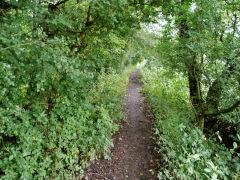
The tramroad towards the river
|
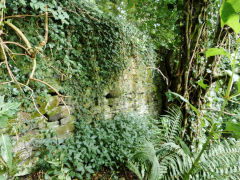
The causeway stone embankment
|
|
|
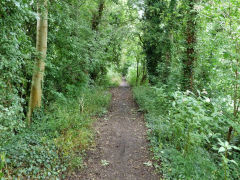
Towards the Sirhowy Tramroad
|
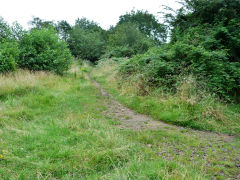
Towards the Sirhowy Tramroad
|
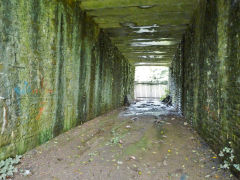
The bridge under the GWR
|

The bridge under the GWR
|
Pye Corner
The Sirhowy Tramroad did a loop at Pye Corner that the later railway straightened out but the route still exists behind the old 'Three Salmons' pub.
Paddy Murphy visited some inaccessible parts of the Pye Corner bridge and found a post marking the start of the 'Golden Mile' through Tredegar Park, the bridge builders plate and some sleepers from the Sirhowy or MRCC tramroad.
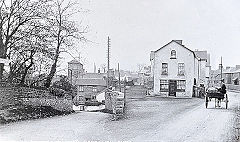
Sirhowy tramroad route
|
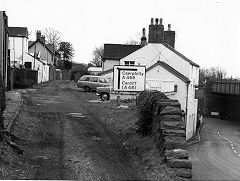
Sirhowy tramroad route
|
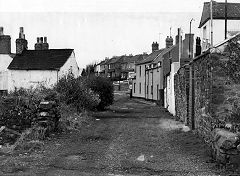
Sirhowy tramroad route
|
|

Sirhowy tramroad route
|

Sirhowy tramroad route
|
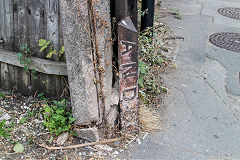
'AND&R Co' boundary post
|
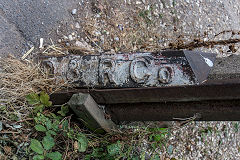
'AND&R Co' boundary post
|
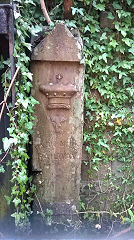
Park Mile Railway marker
|
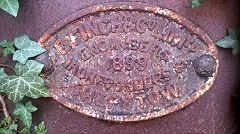
Pye Corner bridge plate
|
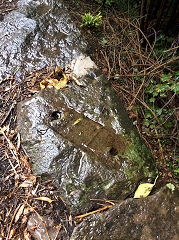
Sirhowy Tramroad sleepers
|
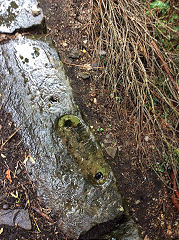
Sirhowy Tramroad sleepers
|
Fourteen Locks
Fourteen Locks on the Crumlin arm of the Monmouthshire Canal is an amazing flight of 14 separate locks.
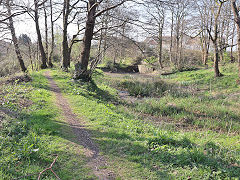
Fourteen Locks
|
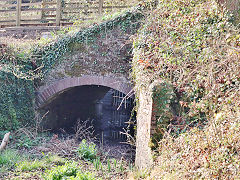
Fourteen Locks
|
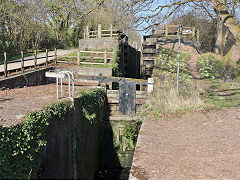
Fourteen Locks
|
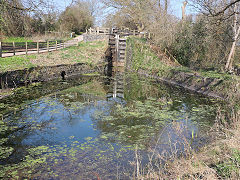
Fourteen Locks
|
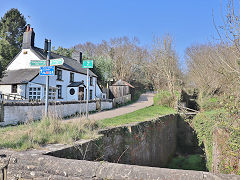
Fourteen Locks
|
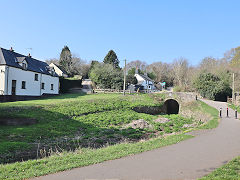
Fourteen Locks
|
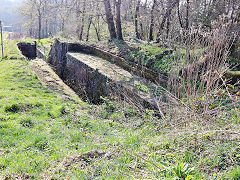
Fourteen Locks
|
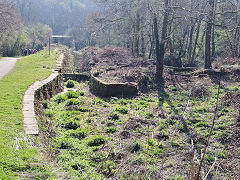
Fourteen Locks
|
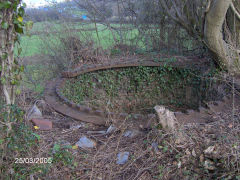
Fourteen locks limekiln
|
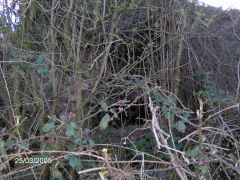
Fourteen locks limekiln
|
|
|
The Brecon and Merthyr Railway through Bassaleg
The Brecon and Merthyr Railway was originally the 'Rumney Railway', the plaque on the viaduct being dated 1826.
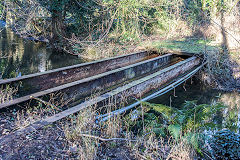
Tredegar Park derelict bridge
|
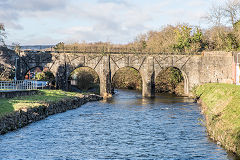
BMR Bassaleg Viaduct
|
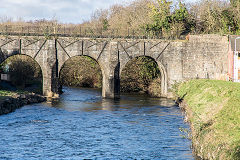
BMR Bassaleg Viaduct
|

BMR Bassaleg Viaduct
|
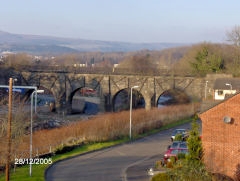
BMR Bassaleg Viaduct
|

BMR Bassaleg Station
|
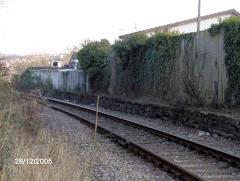
BMR Bassaleg Station
|
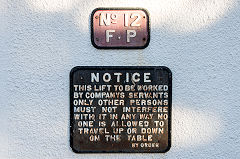
Bassaleg Station signs
|

BMR Bassaleg sidings hut
|
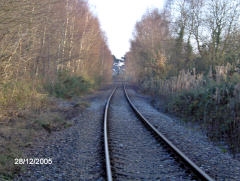
BMR towards Bassaleg station
|
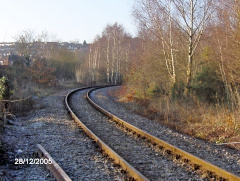
BMR towards Rhiwderin station
|

BMR towards Rhiwderin station
|
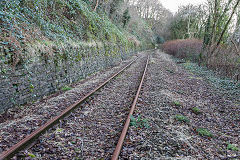
BMR towards Rhiwderin station
|
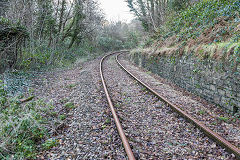
BMR towards Bassaleg station
|
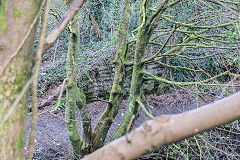
BMR bridge into Alcan works
|

BMR bridge into Alcan works
|
Rhiwderin - The Garth Sheet Iron Co
Garth Iron and Tinplate Works - ST 2632 8729
Neither the iron or brick works are on the 1843 Tithe map. The subway under the B&MR gave access to the iron works by 1869 but the works went into liquidation in 1878 and the site was vacant in 1901. The Garth Sheet Iron Co was owned by Robert Nurse,who was connected with sale of bankrupt Holywell Tin Plate Co in 14 April 1870. He was the Machen agent for the Universal Provident Life Association in 1853 and died on 5 December 1879. The ironworks site was taken over by the Tredegar estate works department and by Periams 'Monmouthshire Brush Factory'.
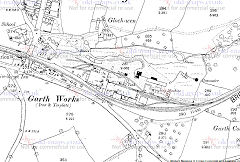
Garth Ironworks, Rhiwderin, 1883
|

Up before the magistrates
|

Dissolution of the partnership
|
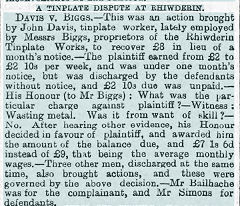
A labour dispute resolved in court
|

Rhiwderin Subway
|
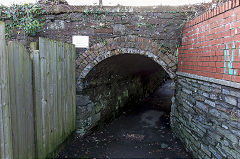
Rhiwderin Subway
|

Rhiwderin level crossing
|
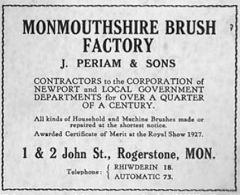
Periam Brush advert from c1925
|
Rhiwderin brickworks - ST 2630 8785
It appears that Rhiwderin brickworks was owned by the Garth ironworks. The 1882 OS map shows 'old brick kilns' and 'old claypits' here. The brick kiln doesn't appear again but the clay pits are still there.
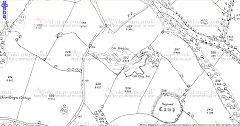
Rhiwderin brick kiln, 1882
|
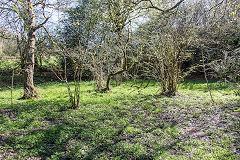
Rhiwderin brickworks clay pits
|
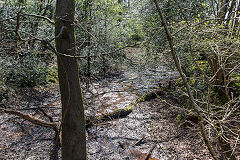
Rhiwderin brickworks clay pits
|
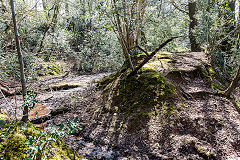
Rhiwderin brickworks clay pits
|
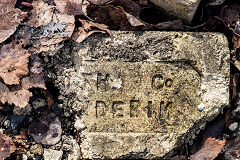
'Garth Co Rhiwderin'
|
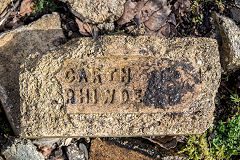
'Garth Co Rhiwderin'
|
|
|
Rogerstone
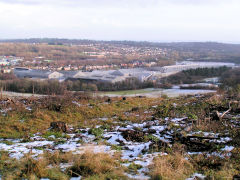
Alcan works, Rogerstone
|
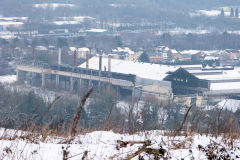
Alcan works, Rogerstone
|
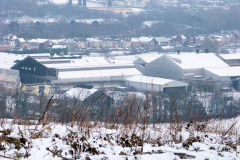
Alcan works, Rogerstone
|
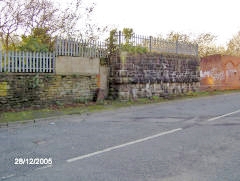
Rail bridge from the GWR
|
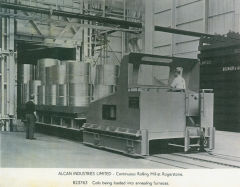
Coils being loaded into furnaces
|
|
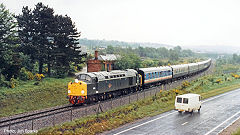
'D200 40122' at Rogerstone Station
|
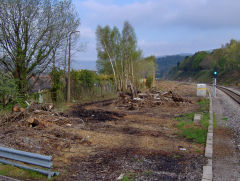
Rail entrance to power station
|
Ponthir and Caerleon - North East Newport
Caerleon (or Porthmawr) Tramroad - ST 3407 9028
Tramroad wharf - ST 3407 9028
You can just make out the remains of the wharf here, the final terminus of the Caerleon Tramroad. The tramroad passed between the river and 'The Hanbury Arms'and along the lane between the new apartments to meet the main road at the sharp bend. It then, rather obviously, went up 'Tram Lane', across the main Usk road and under the railway to Caerleon Ironworks.
Tramroad milepost - ST 3389 9058
The only surviving milepost from the Caerleon Tramroad is in front of the school on the main road through the village. It was dredged from the Afon Llwyd close to where it would have stood beside the tramroad.
Caerleon Forge and Ironworks - ST 3688 9158
Originally opened in the 1750s, the Caerleon Forge and Ironworks has been used since the 1940s by various light engineering companies. The remaining buildings are corrugated iron but still worth a look. The leat can be seen next to the main road.
Ponthir Road bridge - ST 3329 9205
Ponthir Road bridge was built to cross the GWR mainline when it opened in the 1870s. Two small arches crossed the tramroad and the works leat as well. The leat used the lower, Southern arch and the tramroad used the other. The tramroad arch was used for some kind of experiments in the 1960s and 70s using a small headframe. To the South, the tramroad disappears into the works yard but the leat is still present next to the main road as it gets closer to the works. To the north, the course of the tramroad and original turnpike road can be seen going through the field in front of the old farmhouse.
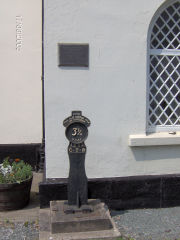
Caerleon Tramroad milepost
|
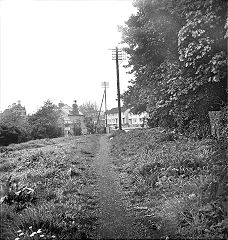
Caerleon Tramroad, 1960
|
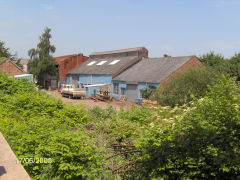
Caerleon Ironworks
|
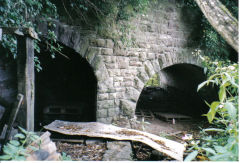
Ponthir Road Tramroad bridge
|
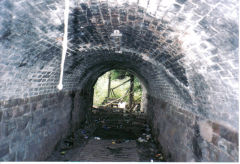
Ponthir Road Tramroad bridge
|
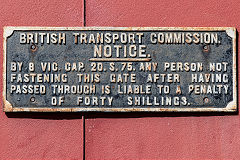
BTC gate notice plate
|
Ponthir Tinplate Works - ST 3250 9262
The site of Ponthir Tinplate Works has reverted to agricultural use, a modern barn having been erected on top of the massive foundation walls. The tree-lined Southern boundary of the field is the course of the tramroad to the riverbank but no trace remains of the river bridge. In the field, parallel to the tramroad, are two depressions which were the outlet leats. To the North, beside the lane, the stonework of the inlet leats is very well preserved up to the site of the weir.
The works were established around 1758 and generally continued in use until being marked 'disused' on the 1920 OS map, for many years owned by the Jenkins family. Originally connected to the Caerleon Tamroad, a siding was laid into the works from Ponthir Station from around 1875. According to the 1881 Census, my Gt. Gt. Grandfather worked here and lived in Laburnam Cottages on the main road.
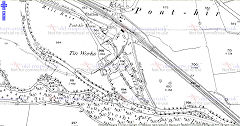
Ponthir Tinplate Works, 1882
|
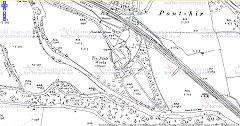
Ponthir Tinplate Works, 1920
|

Ponthir Tinplate Works, c1890
|
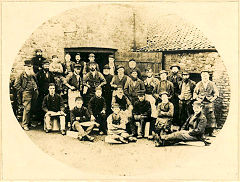
Ponthir Tinplate Works, c1890
|
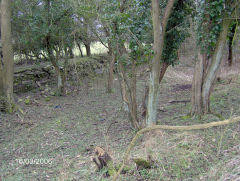
Mill race from the river
|
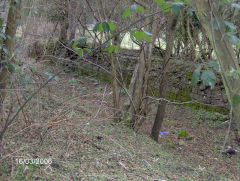
Mill race from the river
|
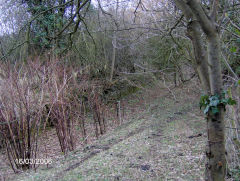
Mill race from the river
|
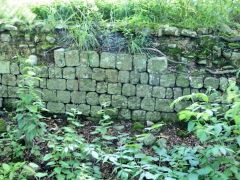
Mill race from the river
|

Ponthir Tinplate Works
|
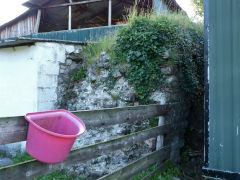
Ponthir Tinplate Works
|
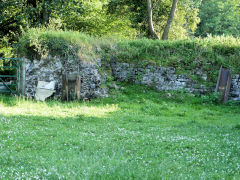
Ponthir Tinplate Works
|
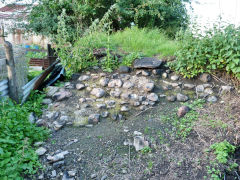
Ponthir Tinplate Works
|

Ponthir Tinplate Works
|

Ponthir Tinplate Works
|

Ponthir Tinplate Works
|
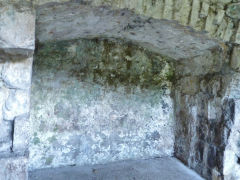
Ponthir Tinplate Works
|
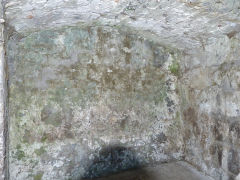
Ponthir Tinplate Works
|
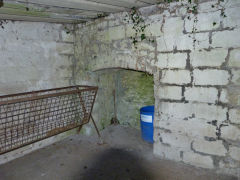
Ponthir Tinplate Works
|
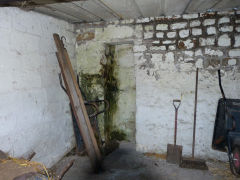
Ponthir Tinplate Works
|
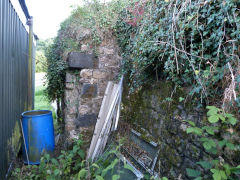
Ponthir Tinplate Works
|
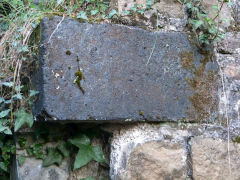
Ponthir Tinplate Works
|
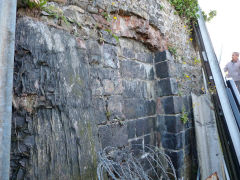
Ponthir Tinplate Works
|
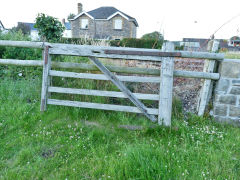
Ponthir Tinplate Works gate
|

Rail fencepost
|

1881 tinplate workers cottages
|
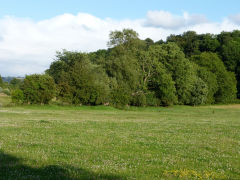
Course of the Caerleon Tramroad
|
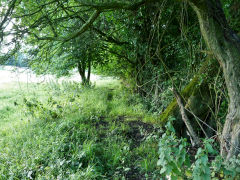
Course of the Caerleon Tramroad
|
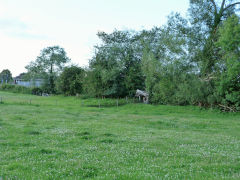
Course of the Caerleon Tramroad
|

Site of Ponthir Station
|
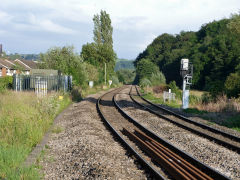
GWR, Tinplate Work to right
|
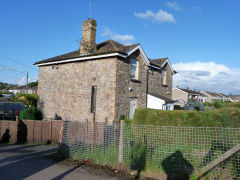
Ponthir Stationmasters House
|
|
The Star Brick and Tile Co Ltd - a brickmaking empire
The Star Brick and Tile Co Ltd began life in 1881 at Llantarnam Road, Cwmbran and by the end of the 1930s the new site at Penrhos, Caerleon had been built and they had acquired Russells brickworks, Waunfawr, Risca and the Allt-yr-yn brickworks in Newport. Tunnadine's brickworks, Malpas Road, Newport and Graig brickworks, Morriston, Swansea had joined the empire in the late 1950s.
Meanwhile in England, Neal and Co. Ltd were producing bricks at Heather, Leics and by 1903 they had changed the company name to the National Brick Co. Seemingly in the 1950s they amalgamated with the Star Brick and Tile Co. Ltd to form the National Star Co. In 1971 the National Star Co was acquired by Butterley Brick / Hanson Plc 1973 seems to be the end of the Star Brick and Tile Co, although National Star Ltd, Newport continues to be mentioned up until 1978.
Towards the end of the Star group in the 1960-70s, bricks were being produced with the generic die "National Star Newport" and small letters to the lower left or right of the stamp to indicate the works of origin. The letter 'A' is for Allt-yr-yn brickworks; 'G' for Graig, Morriston, Swansea; 'L' for Llantarnam, Cwmbran; 'M' for Malpas, Newport , 'P' for Penrhos and 'RC' for Waunfawr, Risca. 'R' and 'C' on their own seem to be misprints of 'RC'.
Penrhos Brickworks - ST 3335 9215
The chimney of Penrhos Brickworks still dominates the surrounding area. The woods to the South conceal a few tramway remains and the ford over the river to the claypits.
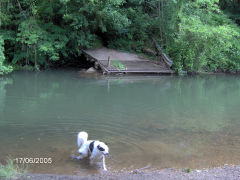
The ford to the claypits
|
|
|
|
'Star' bricks
Not surprisingly, there are a great many variations of empire's imprints and these are just the 'STAR' varieties that I know about up to now.
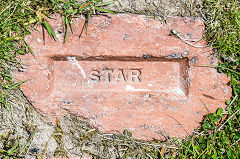
'STAR', type 1
|
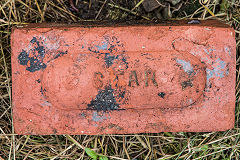
'STAR', type 2
|

'STAR', type 3
|
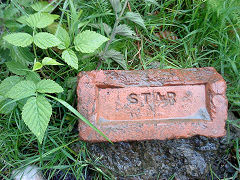
'STAR', type 4
|
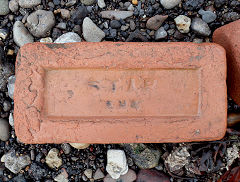
'STAR ENG'
|
|
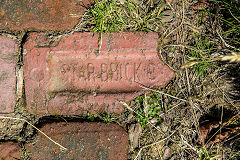
'Star Brick Co'
|
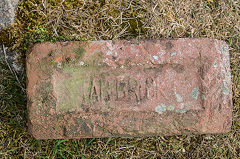
'Star Brick Co'
|

'Star Brick Co Newport Mon'
|
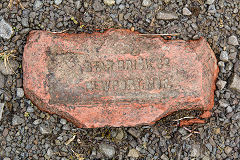
'Star Brick Co Newport Mon'
|
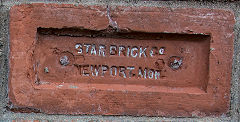
'Star Brick Co Newport Mon'
|
|
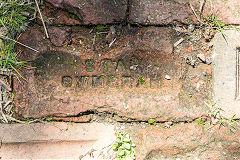
'Star Cwmbran'
|
|

'Star Caerleon', type 1
|

Star Caerleon, type 2
|

'Star Newport', type 1
|

'Star Newport', type 2
|
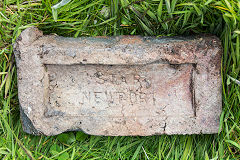
'Star Newport', type 3
|
|
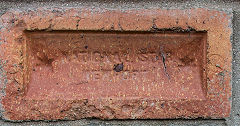
'National Star Newport L'
|
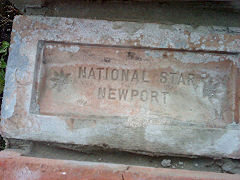
'National Star Newport M' (Malpas)
|
|
|


























